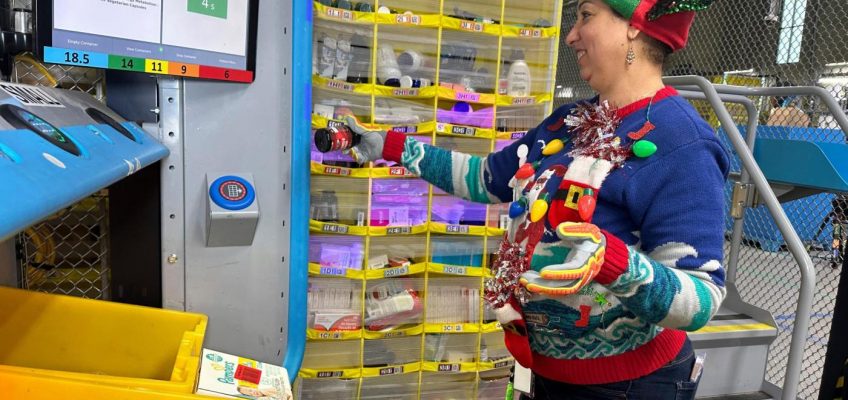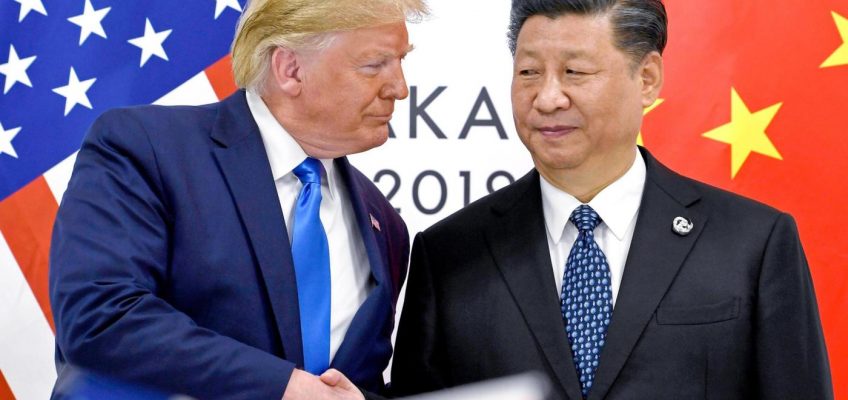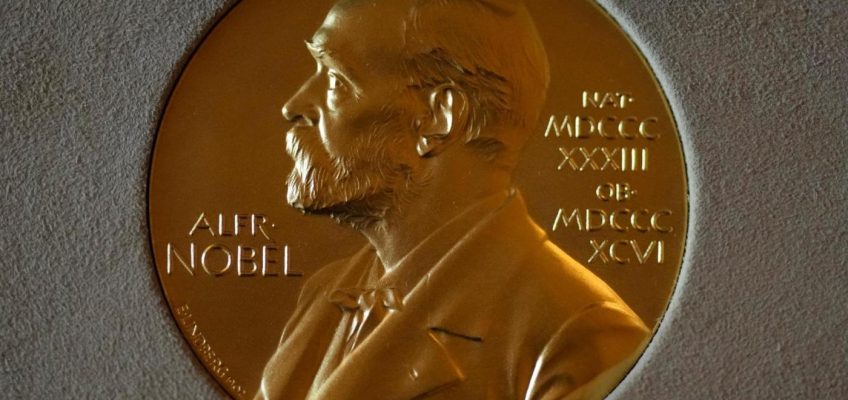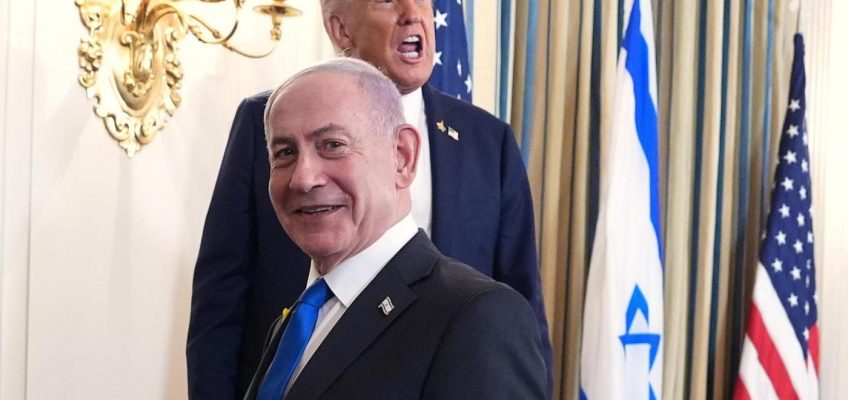By ANNE D’INNOCENZIO, Associated Press Retail Writer
NEW YORK (AP) — Uncertainty over the economy and tariffs is forcing retailers to pull back or delay plans to hire seasonal workers who pack orders at distribution centers, serve shoppers at stores and build holiday displays during the most important selling season of the year.
American Christmas LLC, which creates elaborate holiday installations for commercial properties such as New York’s Rockefeller Center and Radio City Music Hall, plans to hire 220 temporary workers and is ramping up recruitment nearly two months later than usual, CEO Dan Casterella said. Last year, the company took on 300 people during its busy period.
FILE – Shoppers pause near a display of handbags at a Coach store in New York on Sunday, Nov. 19, 2023. (AP Photo/Anne D’Innocenzio, File)
The main reason? The company wants to offset its tariff bill, which Casterella expects to be as big as $1.5 million this year, more than double last year’s $600,000.
“The issue is if you overstaff and then you underperform, it’s too late,” Casterella said. ”I think everyone’s more mindful now than ever. ”
Holiday hiring could fall to the lowest level since 2009
Job placement firm Challenger, Gray & Christmas forecasts hiring for the last three months of the year will likely fall under 500,000 positions. That’s fewer than last year’s 543,000 level and also marks the smallest seasonal gain in 16 years when retailers hired 495,800 temporary workers, the firm said. The average seasonal gain since 2005 has been 653,363 workers, the firm said.
FILE – An employee stocks shelves in the toy section of a Walmart in Secaucus, N.J., Tuesday, Nov. 22, 2022. (AP Photo/Seth Wenig, File)
Among other companies cutting holiday payrolls: Radial, which powers deliveries for roughly 120 brands like Lands’ End and Cole Haan and operates 20 fulfillment sites. It plans to hire 6,500 workers, fewer than last year’s 7,000, and is waiting to the last minute to ramp up hiring for some of its clients, chief human resources officer Sabrina Wnorowski, said.
Bath & Body Works, based in Reynoldsburg, Ohio, said it plans to hire 32,000 workers, lower than the 32,700 a year ago.
Among the bright spots: Online behemoth Amazon Inc. said Monday it intends to hire 250,000 full-, part-time and seasonal workers for the crucial shopping period, the same level as a year ago.
“We saw real strong signals that there’s been a cooling in the labor market, even beyond what our expectations were in the first nine months of the year,” Challenger’s senior vice president Andy Challenger said. “We are having lots of regular conversations with companies about pending layoffs and changes they’re making to their workforce.”
In addition to overall economic uncertainty, Challenger noted companies are using artificial intelligence bots to replace some workers, particularly those working in call centers. And he’s also seeing companies hiring workers closer to when they need them.
Meanwhile, the list of companies staying mum about their specific holiday hiring goals keeps growing. Target Corp., UPS and Macy’s are declining to offer figures, a departure from the past. UPS had hired 125,000 seasonal hires last year, while Target announced last year it planned to hire 100,000 workers. Macy’s last year said it would hire 31,500 seasonal workers.
Holiday hiring: the first clues to what’s in store for spending
Retailers’ hiring plans mark the first clues to what’s in store for the U.S. holiday shopping season and come as the U.S. job market has lost momentum this year, partly because Trump’s trade wars have created uncertainty that’s paralyzing managers trying to make hiring decisions.
The Labor Department reported in early September that U.S. employers — companies, government agencies and nonprofits — added just 22,000 jobs in August, down from 79,000 in July and well below the 80,000 that economists had expected.
Related Articles
China shows no sign of backing down while issuing call for US to withdraw tariff threat
Business People: Marine technician Dan Derfler celebrates 50 years at MarineMax Nisswa
Real World Economics: How farm payouts violate basic principles
One Tech Tip: Annoyed by junk calls to your iPhone? Try the new iOS 26 call screen feature
From barks to words: Researchers aim to translate dog sounds with AI
The government shutdown, which started Oct. 1 and has delayed the release of economic reports, could worsen the job picture.
In an attempt to exert more pressure on Democratic lawmakers as the government shutdown continues, the White House budget office said Friday that mass firings of federal workers have started.
The firings are happening as hundreds of thousands are already furloughed and still others are being required to report to duty without pay.
Analysts will be closely monitoring the shutdown’s impact on spending. For now, many retailers say that consumers, while resilient, are choosy about what they buying. Analysts will also be closely watching how shoppers will react as retailers push through price increases as a result of high tariff costs in the next few months, experts said.
Given an economic slowdown, holiday spending growth is expected to be smaller than a year ago, according to several forecasts.
Mastercard SpendingPulse, which tracks spending across all payment methods including cash, predicts that holiday sales will be up 3.6% from Nov. 1 through Dec. 24. That compares with a 4.1% increase during the year-ago period.
Deloitte Services LP forecasts holiday retail sales to be up between 2.9% to 3.4% from Nov. 1 through Jan. 31. That’s compared to the same year-ago period when retail sales increased 4.2% from the year before.
Adobe expects U.S. online sales to hit $253.4 billion this holiday season from Nov. 1 to Dec. 31, representing a 5.3% growth. That’s smaller than last year’s 8.7% growth.
A more flexible approach
Given the uncertainty, companies increasingly want to hire workers closer to when they need them, experts said.
“In today’s environment, brands are really looking for us to be agile,” Radial’s Wnorowski said. “Radial is meeting that need of the customer and the consumer with a more flexible and disciplined approach to hiring.”
So for some of its clients, Radial will now be hiring two weeks before Thanksgiving weekend, the traditional start for the holiday shopping season, instead of four weeks before the kickoff, she said. Radial is also speeding up training of holiday hires due to new technology that’s simplifying their tasks. It used to take a couple of days to train a worker, but now it only takes a couple of hours, she said.
Meanwhile, Target said it’s again embracing a three-prong approach. It starts first by offering current workers additional hours and then taps into a separate pool of workers— 43,000— who pick up shifts that work for their schedules. The Minneapolis-based company also hires seasonal workers across its nearly 2,000 stores and more than 60 distribution facilities to meet demand, it said.
For the past few years, Walmart, the nation’s largest retailer and the largest private employer, has been offering the extra hours available during the holidays to its workers, a Walmart spokesperson said, noting it’s worked well and the feedback from customers and workers has been “overwhelmingly positive.”
The Bentonville, Arkansas-based retailer said there may be some seasonal hiring on a store-by-store basis, but the majority of stores will dole out those hours to current workers.
Late start plus no economic data could create challenges
Waiting until the last minute to hire workers could mean a mad scramble to find talent, but companies say that due to the slowing economy, they don’t anticipate having a hard time finding the needed pool.
Meanwhile, the temporary halting of the release of economic reports leaves retailers in the dark about forecasting sales and the workers they need to meet the demand.
“Certainly, for our customers not having access to data will put more of a challenge on their ability to forecast,” Wnorowski of Radial said. “But we’ll stay very close to them as we go into peak and we’ll adjust as soon we see things changing.”




